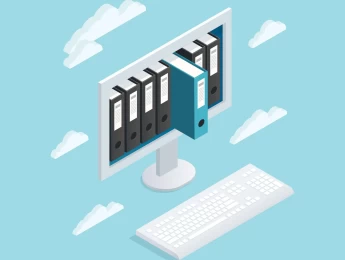Course Summary
Regardless of industry, any organisation is going to require efficient document storage and management to be able to function at its peak capacity. This is especially true within the engineering industry, where there is a plethora of important and confidential documents that need to be stored in a secure way.
Electronic document storage and management is crucial to the functionality of an organisation. Accurate classification and storage of documents will allow the necessary personnel to view and access the exact information they require within a timely manner, so employees can continue their tasks with little disruption. An outdated or complicated storage system can severely impact someone’s productivity, as they can spend their valuable time searching for required documents instead of focusing their attention elsewhere.
Not only does document management involve the efficiency of the system, but also has a strong focus on the security of the system. An organisation is guaranteed to have confidential files that only a select few should be able to access. An ideal system should have strict security measures and approval processes in place to ensure no unwanted person is able to access and potentially tamper with them.
During this course, you’ll learn:
- To understand the vitality of document control, auditing, and storage within an organisation.
- To review the security requirements when managing confidential documents.
- To explain how effective filling systems are developed.
- To consider who needs to be involved when creating filling systems.
- To evaluate the consequences of poor documentation storage on business productivity.
- To utilise innovative methods and techniques to create improved filling systems.
- To improve filling and documentation standards.
- To thoroughly understand organisation policies and procedures for document management.
- To introduce documentation management practices and standards.
10. To identify ISO standards for documentation standards.
This course is designed for anyone within an engineering organisation with the responsibility of document management. It would be most beneficial for:
Operation Managers
Engineering Project Managers
POM Personnel
Finance Managers
IT Managers
Senior Executives
Engineering Directors
Chief Information Officers (CIOs)
This course uses a variety of adult learning styles to aid full understanding and comprehension. Participants will review genuine examples of EDMS systems in established organisations to highlight areas of importance and security measures in place.
They will be provided with the ideal tools and equipment necessary to carry out the given learning exercises. Combined with presentations, discussions, and group activities, participants will be able to develop a thorough understanding of the taught content. Furthermore, they will be given the opportunity to develop their own EDMS systems in relation to their respective roles and demonstrate them to one another. This will allow them to see how accessible their systems are and what improvements could be made.
Course Content & Outline
Section 1: Introduction to Engineering EDMS
- Defining Electronic Documentation Management Systems (EDMS)
- Documentation management policies and procedures.
- Indexing, taxonomy and classification.
- The importance of document management procedures within an organisation.
- Version control, audit and managing Metadata.
- ISO standards, regulations and solutions for compliance.
Section 2: Roles & Responsibilities
- Developing key responsibilities for managing EDMS.
- Improving business process re-engineering and business processes.
- Important information to include and workflow potential.
- Evaluating who needs to be involved and approval processes.
- Management support, reviews and security approvals.
Section 3: Designing EDMS
- Understanding the role innovation plays in designing EDMS.
- Methods and techniques to invoke innovation.
- Creating a design overview detailing goals and objectives.
- Establishing documentation control procedures aligned with ISO standards.
- Creating classifications, taxonomies, retention requirements and filing systems.
- Constructing security controls and reviewing information security ISO 27001.
- Gaining approval for necessary personnel.
Section 4: IT Standards and Implementation
- Reviewing the newly created EDMS.
- Communicating effectively with colleagues, employees, and superiors the benefits of the new systems.
- How to handle change resistance.
- Procuring an EDMS.
- Implementation of the best practices.
- Assessing the latest technologies and their potential benefits – Cloud Computing and Software as a Service (SaaS).
Section 5: Reviewing Post-Implementation
- Analysing increases in productivity and functions.
- Identifying mistakes and rectifying them before they impact efficiency.
- Review security measures to ensure there have been no breaches.
- Document success and look for inspiration for future improvements.













